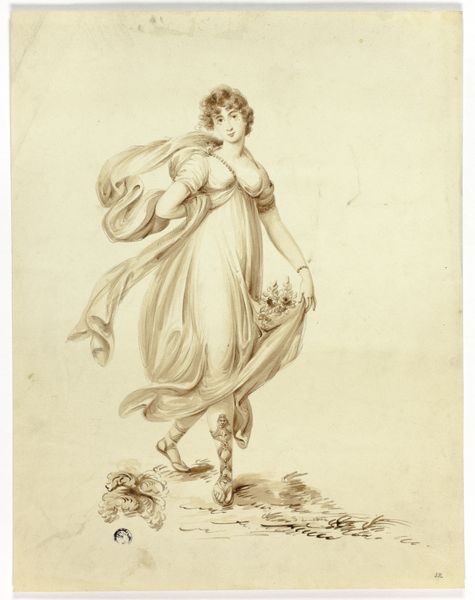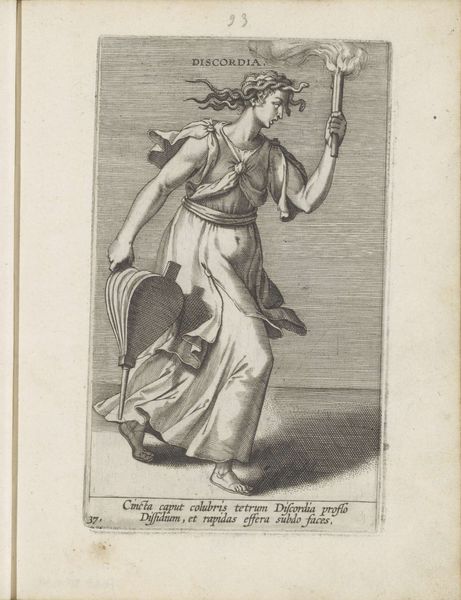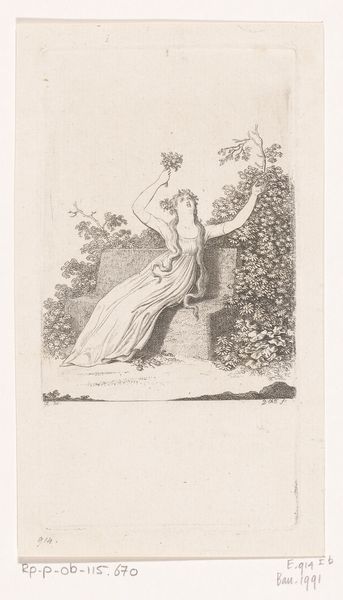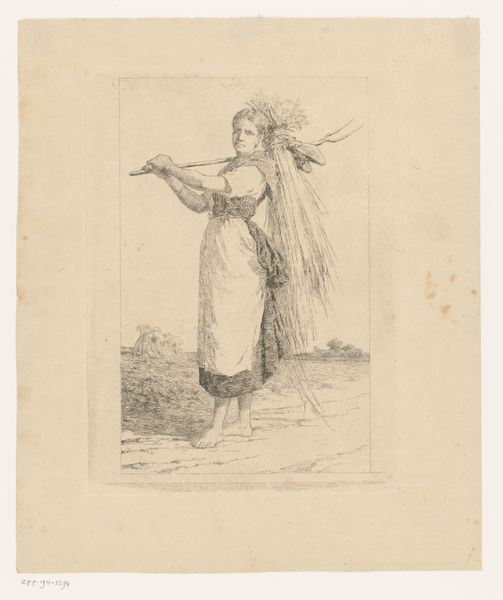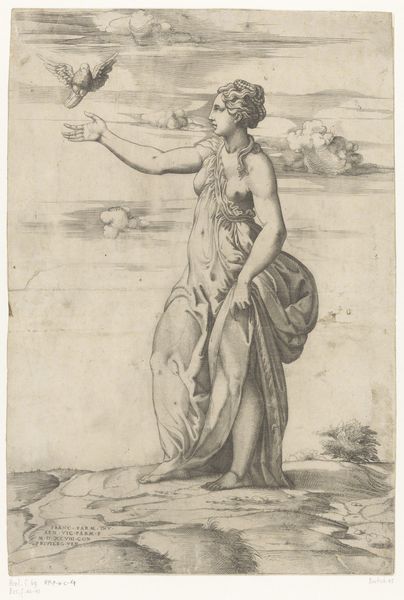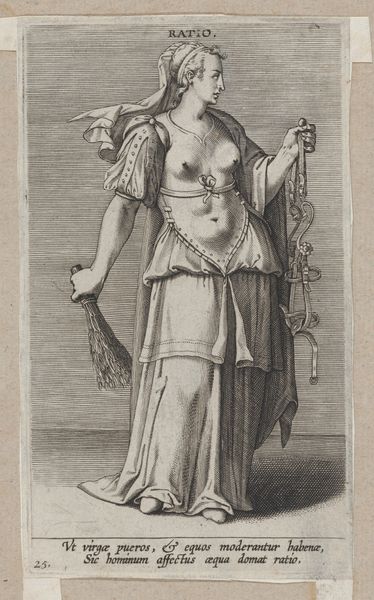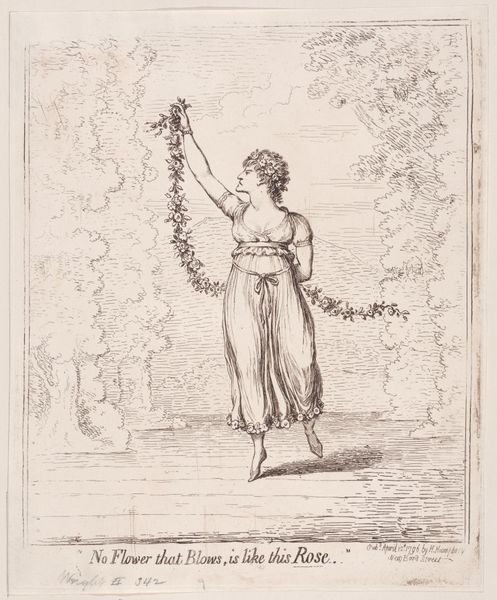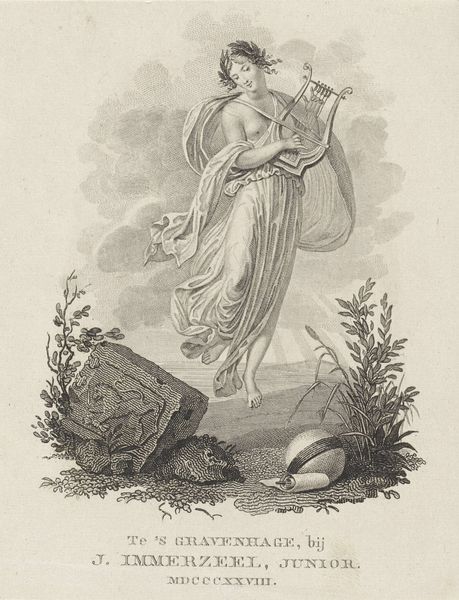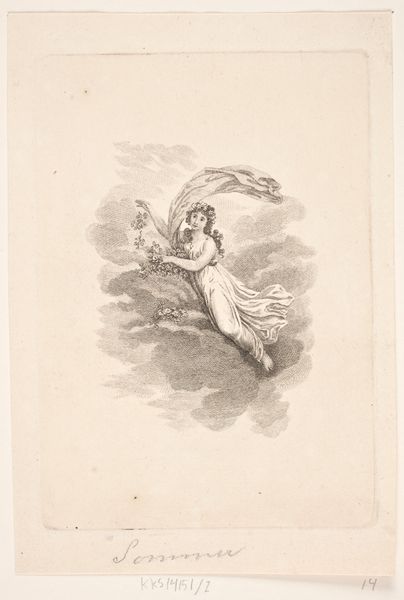
print, engraving
#
neoclacissism
# print
#
old engraving style
#
landscape
#
classical-realism
#
figuration
#
history-painting
#
engraving
Dimensions: height 312 mm, width 249 mm
Copyright: Rijks Museum: Open Domain
Alexandre Chaponnier created this print of Diana, the Roman goddess of the hunt, in the late 18th century. Chaponnier's Diana exists in a pivotal moment for European women. The image presents an idealized and powerful female figure but is viewed through the lens of its time. Diana strides forward, bow in hand, a picture of classical beauty and independence. Yet, her femininity is softened by the flowing drapery and delicate features, fitting within the period's aesthetic ideals. During Chaponnier's lifetime, the French Revolution challenged societal norms and prompted new ideas about citizenship and rights, albeit mostly for men. Representations of women became a battleground between traditional roles and emerging calls for equality. Diana, as a strong, independent woman, could be seen as an aspirational figure. However, her story is rooted in mythology, safely distant from the real-world demands for women's rights. She embodies a controlled form of female power, one that doesn't upset the established order.
Comments
No comments
Be the first to comment and join the conversation on the ultimate creative platform.

